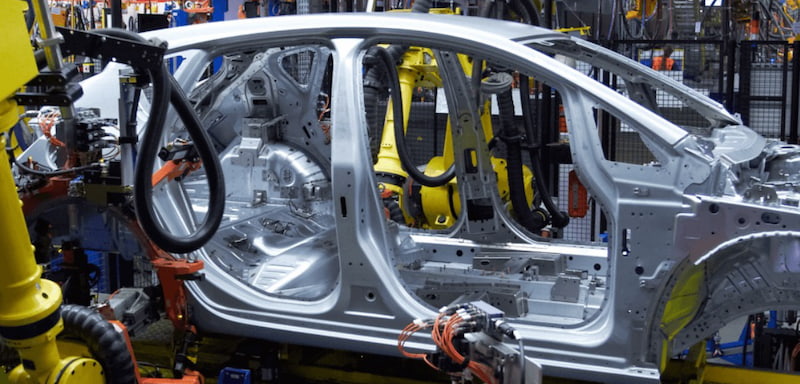There’s nothing more frustrating than being ready to head out and realizing your car won’t start. It’s especially puzzling when everything else seems fine, yet the engine refuses to turn over. A bad starter might be to blame, and when this happens, many drivers wonder if jump-starting the car will solve the issue. In this blog, we’ll explore whether you can jump-start a car with a bad starter and what you can do to get your car back on the road.

What Is a Starter, and Why Does It Matter?
Before we dive into the jump starter debate, it’s critical to understand what a starter motor does in your vehicle. The starter motor is an electric motor that turns the engine over when you turn the key or press the starter button. It basically starts the combustion process, which powers your car. Without a working starter motor, even if the battery is charged, your engine won’t start.
A bad starter can manifest itself in a number of ways. Sometimes, you may hear a clicking sound, and other times, there may be no sound at all. If your starter motor is faulty, it won’t be able to initiate the engine start sequence. In some cases, a bad starter can lead to a complete failure, rendering the car immobile until the part is replaced.
Can You Jump-Start a Car with a Bad Starter?
Jump starting a car involves providing a power boost to a weak battery. The goal is to give the battery enough charge to get the engine turning. Jump starting a car with a faulty starter motor is another story, however. Unfortunately, if the starter motor is not working properly, jump starting may not be the solution. Here’s why:
The problem is the starter motor, not the battery: Jump starting a car requires using another car’s battery to get the car’s own battery working. If the problem is with the starter motor, a jump start is unlikely to help, as the starter motor will not be able to turn the engine over, even if the battery has enough power.
The engine won’t turn over: Even with a fully charged battery, if the starter motor is faulty, it will not be able to engage and turn the engine over. In these cases, a jump start may provide power to the battery, but it won’t fix the root problem: the faulty starter motor.
Potential for additional damage: If the starter motor is not working properly, attempting to jump-start your car could put unnecessary stress on the vehicle’s electrical system. If the starter motor draws too much current or shorts out, it could cause further damage.
What Can You Do If Your Starter Is Bad?
If jump-starting your car doesn’t work because of a faulty starter, what are your options? While you won’t be able to bypass the bad starter with a jump-start, there are a few things you can try before calling a tow truck:
1. Check the Battery: Sometimes, a dead or weak battery can be confused with a bad starter. Before assuming your starter is at fault, check the battery voltage with a multimeter or by using a battery tester. If your battery voltage is low, you might just need to charge or replace the battery instead of the starter.
2. Tap the Starter: In some cases, a bad starter can be temporarily revived by tapping it gently with a hammer or a wrench. This is a trick many mechanics use when the starter’s solenoid is stuck or malfunctioning. By tapping it, you may free the solenoid enough to get the starter to work, at least long enough to drive the car to a repair shop.
3. Try Neutral or Park Gear: If your vehicle has an automatic transmission, try shifting into neutral and then turning the key. Sometimes, a bad starter can get “stuck” in one gear, and shifting it out of park might free it enough to start the engine.
4. Check Fuses and Connections: Sometimes, the issue isn’t the starter itself but a blown fuse or loose connections. Inspect the starter relay, wiring, and fuses to ensure everything is connected and intact.
5. Consider Starter Replacement: If none of the above solutions work, it’s time to think about starter replacement. A mechanic will be able to diagnose the problem and replace the faulty starter motor, getting your vehicle back to normal operation.
When Should You Get a Professional Opinion?
If your car still won’t start, even after trying the steps above, it’s time to consult with a professional. An experienced mechanic will have the tools and knowledge to properly diagnose the problem and recommend the best way to proceed. Sometimes, a faulty starter is a symptom of an underlying electrical problem that requires further attention.
Additionally, if you need to replace the starter, it’s critical to do so as soon as possible. A faulty starter can leave you stranded, and if not replaced, it could damage other parts of your vehicle, including the battery and alternator. Replacing the starter is typically not a job that can be done by drivers themselves, as it involves working with electrical components and sometimes removing other engine parts.
Conclusion
Jump-starting a car with a bad starter is unlikely to solve the problem, as a malfunctioning starter won’t engage, no matter how much power is supplied to the battery. If you’re experiencing issues with your car starting, it’s essential to check the battery and starter motor to determine the root cause. In some cases, a simple tap or a shift in gears may temporarily fix the problem, but for long-term solutions, starter replacement is usually necessary. If you’re dealing with a bad starter, don’t hesitate to get help from a professional mechanic. To find expert services or learn more about starter issues, visit here for more information and tips.